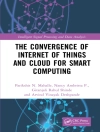This book outlines the principles of thermoelectric generation and refrigeration from the discovery of the Seebeck and Peltier effects in the 19th century through the introduction of semiconductor thermoelements in the mid-20th century to the more recent development of nanostructured materials. It is shown that the efficiency of a thermoelectric generator and the coefficient of performance of a thermoelectric refrigerator can be related to a quantity known as the figure of merit. The figure of merit depends on the Seebeck coefficient and the ratio of the electrical to thermal conductivity. It is shown that expressions for these parameters can be derived from the band theory of solids. The conditions for favourable electronic properties are discussed. The methods for selecting materials with a low lattice thermal conductivity are outlined and the ways in which the scattering of phonons can be enhanced are described. The application of these principles is demonstrated for specific materials including the bismuth telluride alloys, bismuth-antimony, alloys based on lead telluride, silicon-germanium and materials described as phonon-glass electron-crystals. It is shown that there can be advantages in using the less familiar transverse thermoelectric effects and the transverse thermomagnetic effects. Finally, practical aspects of thermoelectric generation and refrigeration are discussed. The book is aimed at readers who do not have a specialised knowledge of solid state physics.
สารบัญ
1. The Seebeck and Peltier Effects.
1.1 Definition of the thermoelectric coefficients.
1.2 The Kelvin relations.
1.3 Electrical resistance and thermal conductance.
2. The Thermoelectric Figure of Merit.
2.1 Coefficient of performance of thermoelectric heat pumps and refrigerators.
2.2 The dimensionless figure of merit, ZT.
2.3 The efficiency of thermoelectric generators.
2.4 Multi-stage arrangements.
3. Measuring the Thermoelectric Properties.
3.1 Adiabatic and isothermal electrical conductivity.
3.2 Problems of measuring the thermal conductivity.
3.3 The Seebeck coefficient.
3.4 Direct determination of the figure of merit.
4 Electronic Transport in Semiconductors.
4.1 Energy band theory.
4.2 Mobility and effective mass.
4.3 Dependence of the transport properties on the Fermi energy.
4.4 Degenerate and non-degenerate conductors
4.5 Optimising the Seebeck coefficient
4.6 Bipolar conduction.
4.7 Band engineering and nanostructure effects.
5 Heat Conduction by the Crystal Lattice.
5.1 Phonon conduction in pure crystals.
5.2 Prediction of the lattice conductivity.
5.3 Solid solutions.
5.4 Mass-defect and strain scattering.
5.5 Grain boundary scattering of phonons.
5.6 Phonon drag.
6 Materials for Peltier Cooling.
6.1 Bismuth telluride and its alloys.
6.2 Bismuth-antimony.
7 Generator Materials.
7.1 IV-VI compounds and alloys.
7.2 Silicon and germanium.
7.3 Phonon-glass electron-crystals.
7.4 Other thermoelectric materials.
8 Transverse Flow and Thermomagnetic Effects.
8.1 Advantages of the transverse thermoelectric effects.
8.2 Synthetic transverse materials.
8.3 The thermomagnetic effects.
9 Thermoelectric Refrigerators and Generators.
9.1 Thermoelectric modules.
9.2 Transient operation
9.3 Thermoelectric generators.
9.4 Future prospects.
List of Symbols
เกี่ยวกับผู้แต่ง
H Julian Goldsmid is a Fellow of the Institute of Physics and Honored Academician of the International Thermoelectric Academy. In 2002 he was awarded the Golden Prize of that organization. In 2012, he received the Outstanding Achievement Award of the International Thermoelectric Society. He also received the Lightfoot Medal of the Institute of Refrigeration in 1959. He was awarded his Ph D by the University of London in 1958 and his DSc in 1966. He has been author, or joint author, of about 200 publications.












